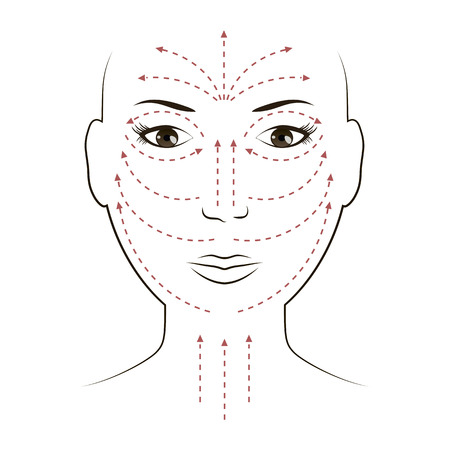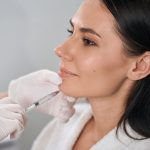1. Understanding Dermal Fillers and Botox
When it comes to facial contouring injectables, two of the most popular options are dermal fillers and Botox. While both treatments can enhance your appearance and reduce signs of aging, they work in different ways and serve different purposes. Understanding how each option works can help you decide which one is right for you.
What Are Dermal Fillers?
Dermal fillers are injectable substances designed to add volume, smooth wrinkles, and enhance facial features. They are commonly made from hyaluronic acid, calcium hydroxylapatite, or poly-L-lactic acid, all of which help restore lost fullness in the face. Fillers are often used to plump lips, contour cheeks, fill deep lines, and even improve the appearance of scars.
How Do Dermal Fillers Work?
Dermal fillers work by adding volume beneath the skin’s surface. Depending on the type of filler used, they can stimulate collagen production, hydrate the skin, or provide structural support. The effects are immediate and typically last anywhere from six months to two years, depending on the formula and treatment area.
What Is Botox?
Botox is a purified form of botulinum toxin that temporarily relaxes muscles responsible for dynamic wrinkles—those caused by facial expressions such as smiling or frowning. Unlike dermal fillers, Botox does not add volume but instead smooths out wrinkles by preventing muscle contractions.
How Does Botox Work?
Botox works by blocking nerve signals to specific muscles in the face. This reduces muscle activity, softening existing wrinkles and preventing new ones from forming. The results appear within a few days and typically last three to four months before requiring a touch-up.
Key Differences Between Dermal Fillers and Botox
| Treatment | Main Purpose | How It Works | Duration of Results |
|---|---|---|---|
| Dermal Fillers | Adds volume and fills wrinkles | Injects gel-like substances to plump up areas with volume loss | 6 months to 2 years |
| Botox | Smooths dynamic wrinkles | Relaxes muscles to prevent wrinkle formation | Around 3-4 months |
2. Key Differences Between Dermal Fillers and Botox
When it comes to facial contouring injectables, both dermal fillers and Botox offer unique benefits. However, they work in different ways, address distinct concerns, and have varying longevity. Understanding these differences can help you choose the right treatment for your aesthetic goals.
How Each Treatment Works
Dermal fillers and Botox target different aspects of facial aging. Here’s how each one works:
| Treatment | How It Works |
|---|---|
| Dermal Fillers | Injectable gels that add volume, smooth wrinkles, and enhance facial contours by filling in lost tissue beneath the skin. |
| Botox | A neuromodulator that temporarily relaxes muscles to reduce dynamic wrinkles caused by repetitive facial expressions. |
The Concerns They Address
The type of injectable you choose depends on the specific concerns you want to target. Below is a comparison:
| Treatment | Main Uses |
|---|---|
| Dermal Fillers | – Plumping lips – Restoring volume to cheeks – Filling in deep lines and folds (e.g., nasolabial folds) – Enhancing jawline or chin definition – Improving under-eye hollows |
| Botox | – Softening forehead lines – Reducing crow’s feet around the eyes – Minimizing frown lines between the brows – Lifting eyebrows for a refreshed look – Preventing new wrinkles from forming |
Treatment Longevity
The duration of results varies depending on the type of injectable used:
| Treatment | Typical Duration |
|---|---|
| Dermal Fillers | 6 months to 2 years, depending on the filler type and treatment area. |
| Botox | Around 3 to 4 months before muscle movement gradually returns. |
If youre looking for immediate volume enhancement, dermal fillers may be your best choice. If you want to smooth expression lines and prevent future wrinkles, Botox might be more suitable. Some patients even combine both treatments for comprehensive facial rejuvenation.

3. Which Injectable is Best for Wrinkles and Fine Lines?
When it comes to reducing wrinkles and fine lines, both Botox and dermal fillers play a role—but they work in different ways. Understanding how each injectable targets specific types of wrinkles can help you choose the right option for your needs.
How Botox Works on Dynamic Wrinkles
Botox is designed to address dynamic wrinkles—those caused by repeated facial expressions like smiling, frowning, or squinting. It works by temporarily relaxing the muscles responsible for these movements, preventing them from contracting and creating creases in the skin. This results in smoother skin and a more youthful appearance.
Common Areas Treated with Botox
- Forehead lines
- Crow’s feet (lines around the eyes)
- Frown lines (between the eyebrows)
How Dermal Fillers Improve Static Wrinkles
Unlike Botox, dermal fillers are used to treat static wrinkles—lines that appear due to volume loss and decreased skin elasticity over time. Fillers work by adding volume beneath the skin, plumping up areas that have thinned out and smoothing out deep-set wrinkles.
Common Areas Treated with Dermal Fillers
- Nasolabial folds (smile lines)
- Marionette lines (lines running from the corners of the mouth downward)
- Cheeks and under-eye hollows
Botox vs. Dermal Fillers: Key Differences for Wrinkle Treatment
| Treatment Type | Main Function | Best For |
|---|---|---|
| Botox | Relaxes muscles to prevent dynamic wrinkles | Forehead lines, crow’s feet, frown lines |
| Dermal Fillers | Adds volume to smooth static wrinkles | Smile lines, marionette lines, volume loss in cheeks |
Which One Should You Choose?
If your main concern is expression-related wrinkles that appear when you move your face, Botox is likely the best option. If you’re dealing with deeper lines caused by volume loss, dermal fillers may be more effective. In many cases, a combination of both treatments provides the most natural-looking results.
4. Facial Contouring: How Each Injectable Enhances Your Features
When it comes to facial contouring, both dermal fillers and Botox play unique roles in enhancing your natural beauty. While they serve different purposes, they can also complement each other to create a balanced and youthful appearance.
How Dermal Fillers Add Volume and Shape
Dermal fillers are designed to restore lost volume, enhance facial contours, and smooth out deep wrinkles. They are commonly used to plump the lips, lift the cheeks, and define the jawline. If youre looking for more structure and fullness in certain areas of your face, fillers might be the right choice.
Common Areas Treated with Dermal Fillers:
- Cheeks: Adds volume and creates a lifted look.
- Lips: Enhances fullness and defines shape.
- Nasolabial Folds: Softens deep smile lines.
- Jawline & Chin: Provides definition and contour.
How Botox Refines Facial Expressions
Unlike fillers, Botox works by relaxing muscles that cause fine lines and wrinkles. It’s perfect for smoothing out dynamic wrinkles—those caused by repeated facial expressions like frowning or squinting. By reducing muscle activity, Botox helps create a more relaxed and refreshed appearance without adding volume.
Common Areas Treated with Botox:
- Forehead Lines: Softens horizontal lines across the forehead.
- Crow’s Feet: Reduces fine lines around the eyes.
- Frown Lines (11s): Smooths deep creases between the eyebrows.
- Brow Lift: Opens up the eyes by lifting the brows slightly.
Comparing Dermal Fillers and Botox for Facial Contouring
If youre unsure which injectable is best for you, here’s a quick comparison to help you decide:
| Treatment | Main Purpose | Common Treatment Areas | Results Duration |
|---|---|---|---|
| Dermal Fillers | Adds volume, enhances contours | Cheeks, lips, jawline, nasolabial folds | 6 months to 2 years (depending on filler type) |
| Botox | Smooths wrinkles by relaxing muscles | Forehead, crow’s feet, frown lines | 3 to 4 months |
The Best Approach: Combining Both for a Balanced Look
For many people, the best results come from using both dermal fillers and Botox together. Fillers restore lost volume where needed, while Botox refines facial expressions for a smoother look. This combination can help achieve natural-looking facial harmony without making features appear overdone.
Who Benefits Most from Combination Treatments?
- If you want to reduce wrinkles while also restoring volume loss.
- If you’re looking for a non-surgical way to achieve a youthful yet natural appearance.
- If you want longer-lasting results by addressing multiple signs of aging at once.
No matter which option you choose, consulting with an experienced provider is key to achieving the best outcome. A personalized treatment plan will ensure that your unique facial features are enhanced in the most flattering way possible.
5. Choosing the Right Treatment Based on Your Aesthetic Goals
When deciding between Botox and dermal fillers, its essential to consider your personal aesthetic goals, the areas you want to enhance, and the results youre hoping to achieve. Both treatments offer unique benefits, but selecting the right one depends on your specific needs.
Understanding Your Aesthetic Goals
Before choosing a treatment, ask yourself what you want to improve about your appearance. Are you looking to smooth out wrinkles caused by facial expressions? Or do you want to restore lost volume and contour certain areas of your face? Identifying your primary goal can help guide your decision.
Comparison of Botox and Dermal Fillers
| Treatment | Best For | How It Works | Typical Results Duration |
|---|---|---|---|
| Botox | Smoothing dynamic wrinkles (forehead lines, crow’s feet, frown lines) | Relaxes muscles that cause wrinkles | 3-4 months |
| Dermal Fillers | Adding volume to cheeks, lips, jawline; filling deep wrinkles | Plumps and lifts skin using hyaluronic acid or other substances | 6 months to 2 years (depending on filler type) |
Selecting the Best Option for You
If your primary concern is reducing fine lines caused by facial movements, Botox may be the better choice. However, if you’re looking to restore lost volume or enhance facial contours, dermal fillers might be the ideal solution.
Can You Combine Botox and Fillers?
The good news is that many people choose to combine both treatments for a more comprehensive approach to facial rejuvenation. Botox can smooth out expression lines while dermal fillers add youthful volume, giving you a balanced and refreshed look.
Your Next Steps
The best way to determine which treatment suits your needs is by consulting with an experienced provider. A professional can assess your facial structure, discuss your goals, and recommend a customized plan tailored to your desired outcome.


